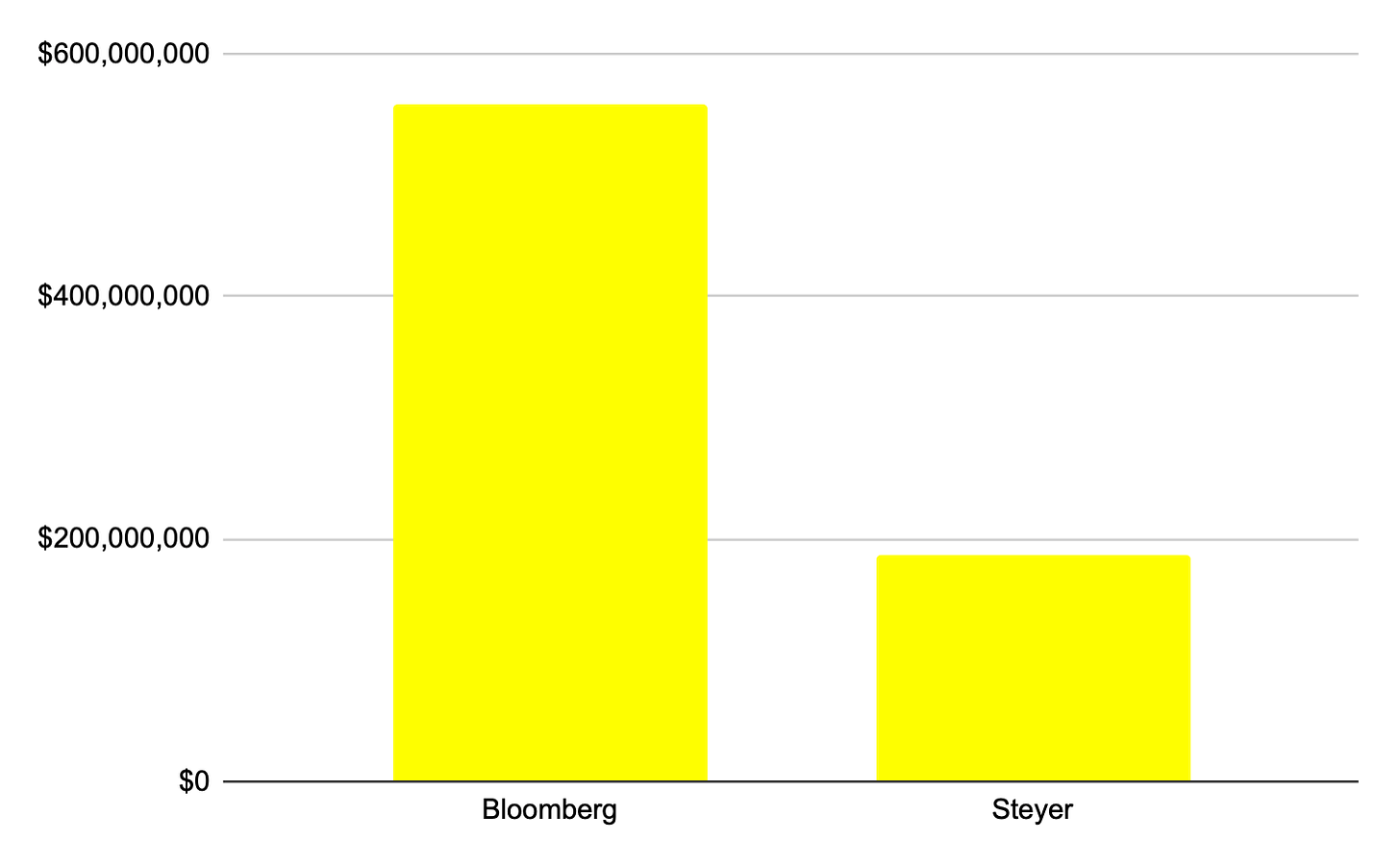What Bloomberg's $500 million ad campaign tells us about the limits of political advertising

Money plays a big role in politics, but spending lots of it isn’t necessarily enough to win elections. Case in point: former New York City Mayor Michael Bloomberg’s campaign.
Bloomberg ended his campaign Wednesday after spending about $558 million on ads, according to Advertising Analytics, an ad tracking firm. That sum doesn’t include the cost of staff, offices, travel, or other campaign expenses.
Bloomberg won just 18 delegates, which comes to about $31 million per delegate. That’s a steep customer acquisition cost (the Washington Post found if you break it down by votes as opposed to delegates, it comes down to a more reasonable range of $60 to $220 per vote, depending on the state).
After Bloomberg formaly announced his candidacy in November 2019, he rolled out a political advertising campaign the likes of which have never been seen before in American history. The cost was unprecedented and it included everything from a Super Bowl ad spot to meme account sponsored posts. “Mike Will Get It Done.”

Bloomberg campaign ad screenshot
His campaign spent about $2.29 million on satellite ads, $25.86 million on radio ads, $44.6 million on cable television ads, $101.24 million on digital ads, and $364.69 million on broadcast television ads as of February 27, per Advertising Analytics. Bloomberg ads were everywhere.
For a sense of scale, here’s Bloomberg’s ad spending budget compared to his next closest spending competitor, fellow billionaire and former candidate Tom Steyer, who spent $186 million on advertising before he dropped out Saturday. Bloomberg spent three times as much as Steyer:
Bloomberg vs. Steyer ad spending

Meanwhile, the rest of the Democratic field and President Trump’s ad spending looks even punier when compared to Bloomberg’s:
Bloomberg vs. Sanders, Trump, Warren, and Biden ad spending

Sen Bernie Sanders (I-Vt.) spent about $48.6 million on advertising, Trump about $27.7 million, Sen. Elizabeth Warren (D-Mass.) about $23.4 million, and former Vice President Biden about $13.9 million, as of February 27.
Bloomberg’s ad spending was even more than the next 93 top-spending campaigns and super PACs combined, which comes in at about $490 million (this total includes spending from campaigns that have since ended):
Bloomberg vs. the next top spending campaigns and super PACs combined

Bloomberg’s ad spending alone was even more than all the money spent by campaigns for Trump in 2016 ($325.5 million) and Mitt Romney in 2012 ($449.5 million), and it’s nearly as much as was spent by Hillary Clinton in 2016 ($563.4 million). If Bloomberg would have kept running and spending at the rate he spent over the past three months, he would have caught up to total amount spent by the Obama 2012 campaign ($721.3 million) sometime next month:
Bloomberg ad spending vs. total campaign spending for party nominees

Money matters in politics because campaigns, especially national campaigns for president, are expensive. Bloomberg’s ad budget undoubtably played a role in his national polling average going from 2.5% in November to a high of 18% this month. But money also matters because it can signal popular support.
Self-funding campaigns traditionally aren’t all that successful. The Center for Responsive Politics found that in 2016, just 12.5% of self-funded candidates who ran for federal office won their races. In 2012, it was 24%.
Sure, cash is cash, but $1 that comes from a supporter can mean something different than $1 that comes from a candidate’s own wallet.

Bloomberg campaign ad screenshot
“It really does make a difference if you raise a dollar versus writing a check,” Jennifer Steen, associate research professor of political science at Arizona State University, told the Center for Responsive Politics at the time.
“Getting people to give you whatever amount is asking them to support you,” Steen said. “So if you raise money from 1,000 contributors, that’s 1,000 people who are interested in your campaign and vested in your success.”
Compared to what we’re used to seeing in presidential politics, Bloomberg’s ad budget was artificially inflated. He was able to buy exposure, but ultimately his half a billion dollar ad campaign represented his bank account, not the size or enthusiasm of his supporters.
Top photo credit: @knowyourmeme/Instagram
Update: This article was updated with Bloomberg’s most recent delegate count and cost per delegate.
Forwarded this email by a friend? Subscribe to Yello for the latest news on the culture, branding, and visual rhetoric of politics, delivered each week:

